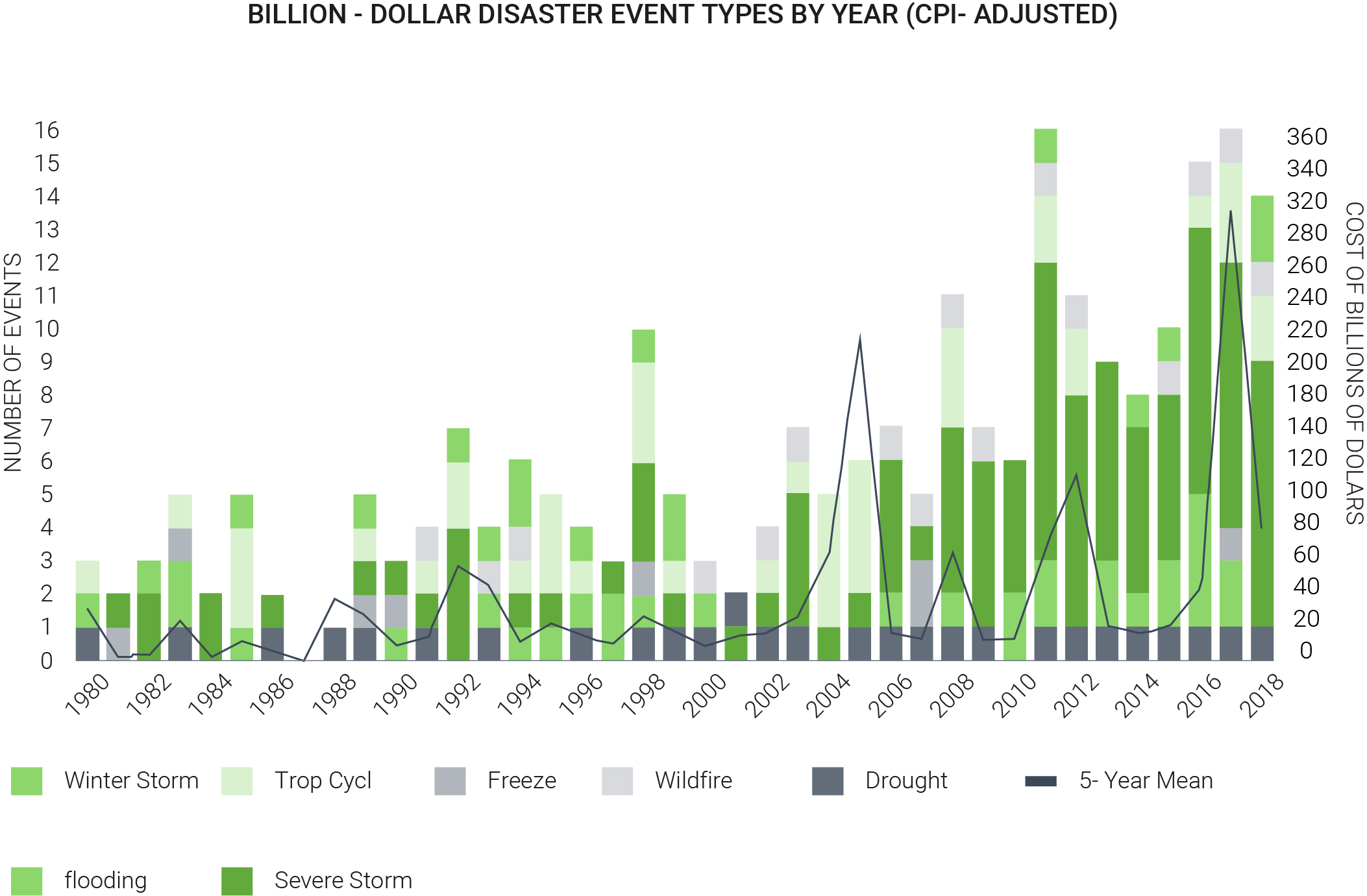The Green New Deal: Climate Change The Nb. 1 Topic For Next US Elections?
19 February 2019
In the last few weeks, the “Green New Deal” garnered a lot of attention from the US media.
The Green New Deal is a broad list of resolutions co-written by senator Ed Markey and representative Alexandria Ocasio-Cortez with the aim to address climate change and economic inequality. The document is highlighting good ideas and goals, is technology agnostic, written in a “wish-list” style, and therefore has no direct policy implications. In other words, it’s a strategical way to bring the climate change topic on the center stage.
But what is this Green New Deal about? The answer is: everything (or almost)! Some of the key resolutions include:
- supplying 100% of the US power demand through clean, renewable, and zero-emission energy sources by 2030,
- repairing and upgrading the infrastructures, building resiliency against climate change-related disasters, upgrading the traditional grid towards a “smart grid”, upgrading buildings, overhauling transportation systems, removing pollution from agriculture, and also providing all US citizens with clean air & water, climate & community resiliency, healthy food, access to nature, sustainable environment in addition to justice & equity.
If you have succeeded reading the above non-exhaustive list without giving up, you will most certainly agree that it is difficult to stand against those resolutions. While many Democrats have already endorsed the idea, the Green New Deal isstill an object of mockery for some Republicanssuch as Republican senator John Barrasso who claimed that this deal means “the end of ice cream and hamburger”, or Trump stating that “it sounds like a high school term paper that got a low mark”.
That said, one thing is granted: The Green New Deal has emerged as an unavoidable topic for the next US Presidential elections, forcing all candidatesto the election to either sign it or explain how they would deal with the climate change issue
A recent survey conducted by Yale University showed that 81% of Americans support the idea of a Green New Deal (including 64% of Republicans!) when not associated with either political party. The Green New Deal is benefiting from strong bipartisan support, and that’s very good news!
While no one can rightly forecast today who will be the next US president, neither how the campaign is to shape up, it seems almost a guarantee that climate change will be a hot topic.
Whether it’s a Republican or a Democrat, in order to be elected the next president will need to take a clear position on how to address the climate challenge as Americans’ concerns about climate change have surged to record levels.
Even in the camp of Republicans the percentage of those who said they believe global warming is happening has increased from 47% to 52% year-on-year and an even larger number of people now believe that climate changes are related to human activities (from 29% in late 2017 to 36% at the end of 2018). That increasing awareness can be attributed to the rising number of disasters (as shown by the National Centers for Environmental Information, chart below) happening in the US.
While we are unlikely to amend our Sustainable Future portfolio composition in relation with this increasing awareness from people and politicians as we look beyond the short term, it’s important to have in mind that even if a small number of the Green New Deal goals were reached, tens of billions in additional spending would fuel faster-than-expected growth in clean technologies, including renewable energy solutions, resilient infrastructures and green mobility. The risk is clearly on the upside.
Explore:
Disclaimer
This report has been produced by the organizational unit responsible for investment research (Research unit) of atonra Partners and sent to you by the company sales representatives.
As an internationally active company, atonra Partners SA may be subject to a number of provisions in drawing up and distributing its investment research documents. These regulations include the Directives on the Independence of Financial Research issued by the Swiss Bankers Association. Although atonra Partners SA believes that the information provided in this document is based on reliable sources, it cannot assume responsibility for the quality, correctness, timeliness or completeness of the information contained in this report.
The information contained in these publications is exclusively intended for a client base consisting of professionals or qualified investors. It is sent to you by way of information and cannot be divulged to a third party without the prior consent of atonra Partners. While all reasonable effort has been made to ensure that the information contained is not untrue or misleading at the time of publication, no representation is made as to its accuracy or completeness and it should not be relied upon as such.
Past performance is not indicative or a guarantee of future results. Investment losses may occur, and investors could lose some or all of their investment. Any indices cited herein are provided only as examples of general market performance and no index is directly comparable to the past or future performance of the Certificate.
It should not be assumed that the Certificate will invest in any specific securities that comprise any index, nor should it be understood to mean that there is a correlation between the Certificate’s returns and any index returns.
Any material provided to you is intended only for discussion purposes and is not intended as an offer or solicitation with respect to the purchase or sale of any security and should not be relied upon by you in evaluating the merits of investing inany securities.


